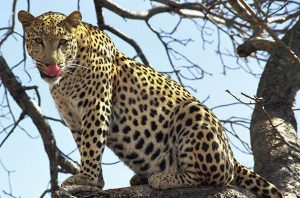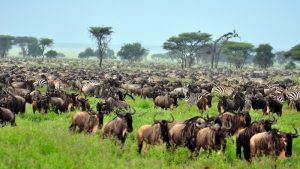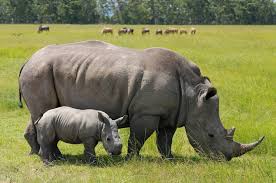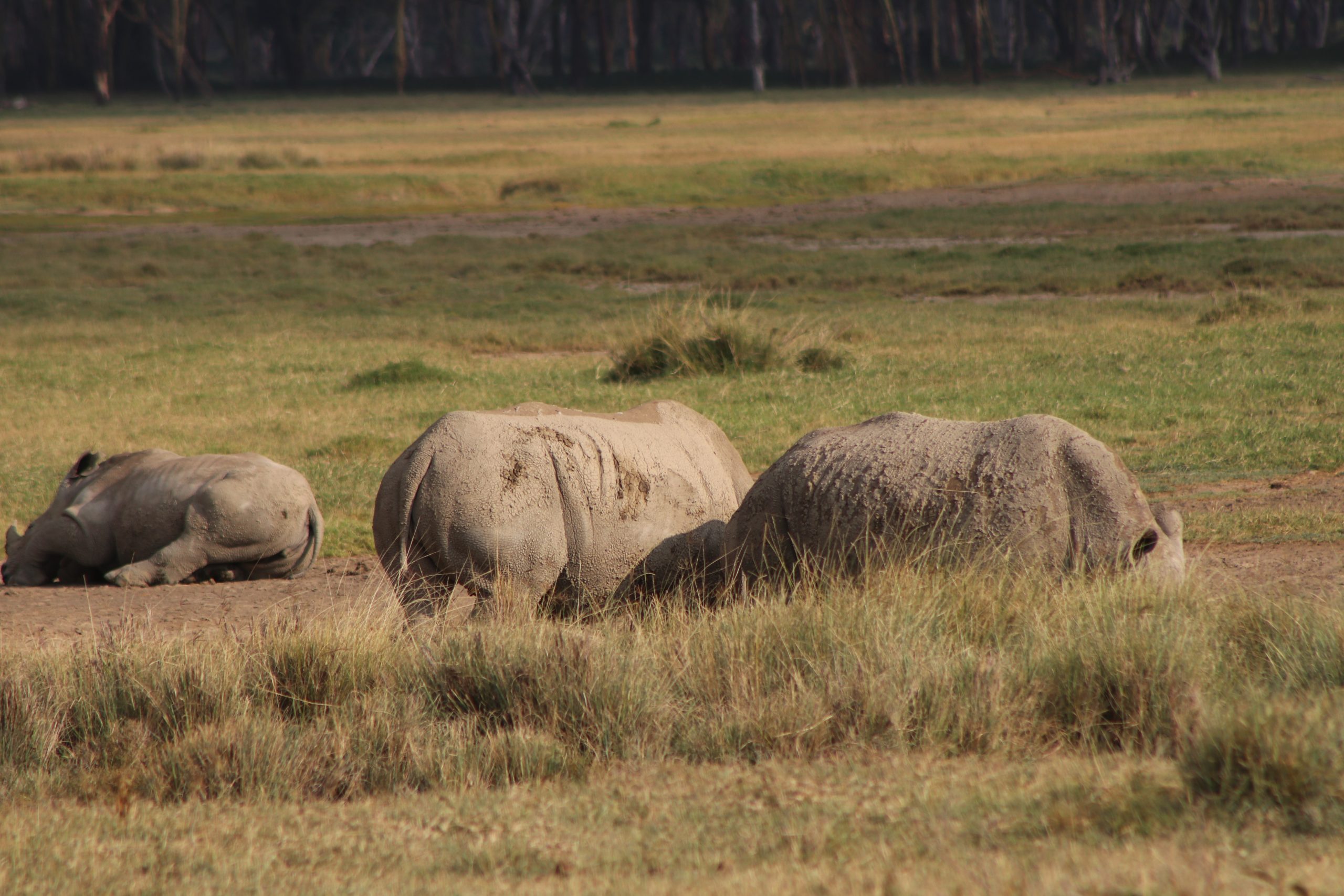Table of Contents
Best 12 Reasons To Visit Ngorongoro Crater In Tanzania
The best 12 reasons to visit Ngorongoro Crater are Africa’s Garden of Eden, world heritage site, game drives, black rhinos, birding, olduvai gorge, hiking craters, maasai village tour, beautiful sunrise and sunset, shifting Sands, Lerai fever Tree Forest, Gol Mountains, lake Magadi, Laetoli, Olmoti Crater and Empakaai Crater, Nasser Rock, Salei Plains and Ol Karien Gorge and Oldeani Mountain,Ol Doinyo Lengai
Ngorongoro Crater is a bowl-shaped natural feature in Tanzania’s Arusha region that was founded in 1959 and offers a stunning backdrop of the Big Five mammals in East Africa. The crater was named after the Ngorongoro people, who lived there before the park was established. It occupies a landmass that is 8,292 square kilometers in total area.
Maasai pastoralists gave the name “Ngorongoro” to the crater in honor of the sound made by the cowbell, which they described as sounding like “ngoro ngoro.” This crater offers the most authentic encounter with mother nature of any location in the vicinity.
1. Africa’s Garden of Eden
Most people think of the world-famous Ngorongoro Crater when they think of the Ngorongoro Conservation Area.
This isn’t really something you should be blamed for.
Ngorongoro Crater, known as Africa’s “Garden of Eden,” is home to 25,000 animals, including ungulates, four of the “Big Five,” and other large mammals. It has a beautiful landscape.
Here, you can see black rhinos, golden cats, wild hunting dogs, and many other species that are almost extinct.
Since there are so many Maasai lions in Ngorongoro Crater, the match is likely to be exciting and tense.


This also helps the Great Migration, which is the biggest animal migration on Earth.
You see, wildebeests have their babies in the Ngorongoro Crater and the Ndutu areas.
At the same time that thousands of new wildebeests are being born, a lot of animals that eat them will be getting ready to take advantage of the situation.

Because of how beautiful it is, some people have called this natural wonder “little Africa in a bowl.”
One traveler described an African safari as “a bowl of unbelievable landscapes filled with almost every African animal you can think of.”
2. Ngorongoro Crater The World Heritage Site Designated by UNESCO
Any person who is passionate about traveling would like to visit as many World Heritage Sites as they possibly can, especially if the location offers an experience that is beyond their wildest dreams. The Ngorongoro Conservation Area is an example of this type of park, and it has been recognized as a UNESCO World Heritage Site since 1979.
The spectacular Ngorongoro Crater is the primary draw here; it is the Ngorongoro Crater that holds the record for being the biggest inactive and unaltered volcanic caldera in the world.
The Crater, which was created roughly 2 to 3 million years ago by a catastrophic explosion and collapse, was recognized as one of Africa’s Seven Natural Wonders in the year 2015. In some circles, it is also referred to as “the cradle of humanity.”
There is much more to the Ngorongoro Conservation Area than initially meets the eye, including a wide variety of species that are threatened all over the world and a dense population of animals. Over the past 80 years, it has also served as a focus for considerable archaeological research, which has unearthed significant evidence of human evolution and the interaction between humans and their environments.
3. Game Drives In Ngorongoro Crater
The Ngorongoro crater is home to more than 30,000 different kinds of species, including cheetahs, lions, elephants, wildebeests, and many more. Did you know that the park contains the greatest number of different species of animals than any other single area in Africa?
The safari experience in Ngorongoro Crater is an exhilarating one, packed with exciting activities and stunning scenery.
When you go on the game drives in the Ngorongoro Crater, you will be accompanied by an experienced safari guide who will lead you through a number of different trails. These paths allow you to have a better view of the animals, get closer to the species, and appreciate the natural surroundings.
The park is home to lions, leopards, hippos, hyenas, buffaloes, warthogs, impalas, rhinoceroses, zebras, water bucks, Reed bucks, wildebeest, elephants, and wildebeest, and it has the largest density of lions anywhere in the world.
4. The Best Place For Black Rhinos
It’s like being transported to Jurassic Park for the first time when you see a black rhino for the first time.
These animals have a hooked upper lip and two huge horns, giving them the appearance of being from another age.
Rhinos were on the verge of extinction, but as a result of conservation efforts, their numbers have increased to more than 5,000 around the world, with 30 of them residing in the Ngorongoro Crater.

Overhunting has put an end to the once-thriving population of black rhinos, which previously roamed most of Sub-Saharan Africa. They are indigenous to the countries of Botswana, Kenya, Malawi, Mozambique, Namibia, Swaziland, Zambia, Zimbabwe, Uganda, and Tanzania.
In 1965, there were 100 black rhinos living in Ngorongoro crater, but this number dropped to zero by the 1980s as a result of poaching. However, as a result of extensive conservation efforts led by the Tanzania National Parks Authority (TANAPA), there are now 26 black rhinos living in Ngorongoro crater.
Although black rhinos can be found across the Ngorongoro Conservation Area, the area between Lerai and Gorigor Swamp to the east of Leria Forest is where visitors are most likely to spot one. After spending the night in the Lerai forest, the black rhinos disperse to different parts of the crater in the morning. Black rhinos in the Ngorongoro conservation region are best seen first thing in the morning, before they disperse to find food.
- The best places to see black rhinos in Ngorongoro Crater
The area between the Lerai woodland and the Gorigor swamp in the Ngorongoro crater/Ngorongoro conservation area is home to a large population of black rhinos, and visitors to the park are likely to see one.; Forest of Lerai AND Gorigor Swamp
This is also the ideal location to cross the Big 5 off your bucket list.
5. Birding In Ngorongoro Crater
Almost the entire country of Tanzania is a birder’s paradise. The Ngorongoro Conservation Area itself is home to 500 bird species, far too many to list in their entirety. If you are interested in Bird watching in Ngorongoro crater, then this is the best destination for birding
Here are a few of my personal favorites.
- Marabou stork
- Common ostrich
- Grey crowned crane
- Saddle-billed stork
- Secretarybird
- Lesser flamingo
- Kori bustard
Lake Magadi
Lake Magadi is found in the south Western part of Ngorongoro area which shrinks noticeably in the dry season leaving crystalline salt pans used as licks by jackals, hyenas and other supplements as their diet, shallow, azure blue, fiercely alkaline from sodium carbonate, is fringed by hundreds of long-legged pink flamingos, lesser flamingos, distinguished by their dark red bills, there are also other greater flamingos with black-tipped pink bills, slightly bent to facilitate sifting shellfish from the rich bottom mud.
6. Olduvai Gorge And Laetoli
Olduvai Gorge is a fantastic destination to visit if you are interested in archaeology or simply want to study crucial paleontological records pertaining to human evolution.
It’s one of the best places to learn about the origins of our species and why this part of the planet is so important to paleoanthropologists.
The first stone tools were made and the first human settlements were built in Olduvai Gorge, marking the beginning of humanity’s march toward civilization. We can trace our genetic heritage back 3.7 million years thanks to the discovery of hominid footprints in Laetoli’s sedimentary rock.
The Olduvai museum houses a collection of fossils that help illustrate the process of evolution.
- Nasera Rock
Nasera Rock, which is located at the base of the Gol Mountains and climbs to a height of 80 meters, is home to a number of animals and birds, including mountaineering klipspringers and baboons.In addition, the Leakey family discovered a Stone Age human habitation that was located at this location.
- Salei Plains and Ol Karien Gorge
At the southernmost tip of the enormous, parched Salei Plains is a ravine known as Ol Karien Gorge, which is surrounded on all sides by steep rock walls.
It is considered a birdwatcher’s paradise due to the fact that the Ruppel’s Griffon Vulture breeds there during the months of March and April, which coincides with the Great Migration and makes for an abundant food supply.
- Oldeani Mountain
The stream that sustains the Lerai Forest is fed by Oldeani Mountain, which is covered in bamboo and located southwest of the Ngorongoro crater, and Lake Eyasi, which is seasonal, is a focal point for archaeological and cultural safaris in East Africa.
Mumba Cave and the nearby Nasera Rock were both significant Paleolithic sites.
- Ol Doinyo Lengai
Mount Kenya’s Maasai name, Ol donyo lengai, literally translates to “Mountain of God.”
It is an active volcano in Tanzania that spews natrocarbonatite lava. It is located on the great rift valley escarpment south of Lake Natron.
This volcano’s most recent eruption occurred in 2007.
Geological investigations after the 1960 eruption of Ol Doinyo Lengai finally confirmed the view that carbonatite rock is derived from magma.
Tourists can now scale its lava-encrusted slopes to peer down into its main crater, where they will be rewarded with sulfur fumes and lava spurts from smaller surrounding cones.
This was made possible by geological investigations following the 1960 eruption of Ol Doinyo Lengai.
7. Hiking Craters (Olmoti Crater And Empakaai Crater)
There are guided nature crater hikes to two further adjacent craters. Cattle are herded by Maasai in Olmoti Crater, a magnificent grassy depression populated by eland, bushbuck, reedbuck, and even buffalo. Hiking craters is the breathtaking activity.
The Munge Stream originates on the south rim of the caldera and drops several hundred meters to the floor of the Ngorongoro crater, where it feeds Lake Magadi.
The very deep soda lake takes up half of Empakaai Crater.
8. Maasai Village Tour In Ngorongoro Crater
The Maasai people are the indigenous people of the region. As a matter of fact, the term Ngorongoro itself means “gift of life,” which is why this spot was chosen.
They are the most famous native people in the Far East, and seeing their hamlet is a once-in-a-lifetime opportunity.Meet Maasai people, dance to their traditional music, watch a dramatic reenactment, and maybe even try on a traditional red cloak!
You’ll get a taste of the vibrant Maasai culture and an insight into real African society through this unique opportunity.
Tribes like the Dtooga, Maasai, and Hadza make their homes in the Ngorongoro Conservation Area and raise livestock around lake Eyasi; these people do not cultivate the land.
Dance, poetry, and drama are all ways in which these people share their values and traditions with outsiders.
- Gol Mountains
It is one of Tanzania’s traditional corners and is home to the Maasai people. The Gol Mountains are home to amazing rock formations that dominate the broad meandering valleys with massive mountains and canyons in the north west of the Ngorongoro Crater.
The Angata Kiti pass is a bottleneck for the annual Great Migration of hundreds of thousands of wildebeest and zebra returning to their ancestral breeding grounds in the southern Serengeti and the Ndutu wilderness.
The Gol Mountains provide a surreal wilderness environment of stark, pink cliffs that enclose the pass.
9. Shifting Sands
The Ngorongoro Crater is distinguished by a black moving dune that is composed of volcanic ash from the adjacent Oldoinyo Lengai mountain and flows slowly in a westerly direction at a rate of around 15 to 20 meters per year. An enormous volcanic eruption that took place over 3,000 years ago at Oldoinyo Lengai, which is an active volcano located around 60 kilometers to the north-east, is responsible for the formation of the dune.
Over the course of time, the dune will periodically alter its shape and may even switch directions. The strong winds that blow across the surrounding plains move the shifting sands, a condition that occasionally creates a mini sand storm in the areas that are surrounding it; it is even possible to climb to the top of the dune to admire the extraordinary phenomenon, take photographs, or view the expansive plains that are surrounding it.
10. Lerai Fever Tree Forest
The Lerai Fever Tree Forest is home to a wide variety of wildlife, including elephants, rhinos, elands, bushbucks, hyrax, and hundreds of different species of birds. It is composed of tall, slender yellow-barked acacia trees that form an airy, lace-canopied wonderland of glades.
The old forest is slowly regenerating despite the damage caused by elephants, which rips off entire branches and is one of the leading causes of the extinction of the black rhinoceros. The endangered black rhinoceros enjoys eating the foliage.
11. Beautiful Sunrise and Sunset
The transitions between day and night are frequently spectacular times to observe wildlife and their behavior. Aside from that, have we mentioned how lovely the sunsets and sunrises are? The Ngorongoro Crater has a lush landscape with jungles along its rim.
Early in the morning, if you stand or stay at a lodge near the crater rim, you will be able to witness the breathtaking movement of the sun as it rises and slowly touches the green grasses of the savannah. If you stay until the sun sets in the middle of the afternoon, you can watch the golden hour and witness one of the most beautiful sunsets of your life.
12. Simple To Gain Access To Ngorongoro Crater
The Ngorongoro Conservation Area may be found within a short driving distance of Arusha, which serves as Tanzania’s primary safari center for the northern safari circuits.
If you are pressed for time but still want to visit Ngorongoro Crater, it is only a three-hour trip from Arusha; therefore, those who are in this situation may find this incredibly useful.
Additionally, it is located in close proximity to well-known tourist destinations, like as the Serengeti National Park and Lake Manyara National Park.
Visit the Ngorongoro Crater and take one of these amazing safari trips for a holiday that’s free of stress.
You will never look back with regret.
How to access Ngorongoro crater
From Arusha, you can drive the entire circuit in a safari vehicle. We will meet you at the airport. The distance to the crater from the Seronera area in the Serengeti is approximately 140 kilometers and takes approximately three hours. This can obviously take much longer if wildlife viewing is allowed along the way. It takes about two hours to drive from Lake Manyara to the Ngorongoro Crater, and about four hours to drive from Tarangire.
We can book chartered flights and domestic flights to Ngorongoro Crater from Kilimanjaro Airport, which is about 46 kilometers from Arusha, or fly into Julius Nyerere near Dar es Salaam and then to Arusha Airport or Kilimanjaro Airport.
Where To Stay In Ngorongoro Crater
Depending on your preferences, there is a wide range of accommodation options in Ngorongoro Crater.
Neptune Ngorongoro Luxury Lodge with a green comfortable environment, Lake Ndutu luxury tented Lodge with a beautiful swimming pool that helps you cool off from the African sun, Ngorongoro Sopa Lodge, Ngorongoro Wildlife Lodge, Ngorongoro Lodge and campsite, jambo room.
When to visit Ngorongoro crater
From the rim of the crater, you are more likely to see a dry, scorched basin or a green, flourishing basin depending on the time of year and the things that you are interested in seeing.
There are four distinct seasons that occur in the park:
- The short dry dry season, which lasts from January to the middle of March.
- The long wet season, which lasts from the middle of March until May
- The short wet season, which lasts from November to December.
- The long dry season, which lasts from June until October. The long dry season is the most popular and the best time to visit the park for a better experience and beautiful photographs.

